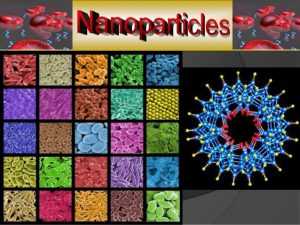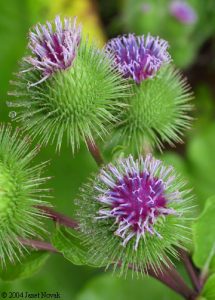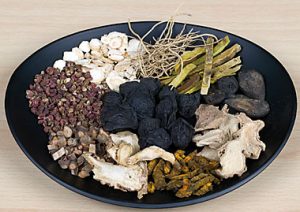Li Lab Isolates Active Ingredients from Herb to Inhibit IgE Production
Food allergy patients and their parents look to the antibody IgE as a marker for the severity of their allergies and their likelihood of outgrowing them. The medicinal herb Arctium lappa L. has been widely used to treat inflammation and has been shown to inhibit production of IgE. The aim of this study was to identify the bioactive compound in this herb that inhibits IgE production. A study by researchers Changda Liu, Kamal D. Srivastava, Nan Yang, Madisyn A. Primas, Renna Bushko, Kyle Chin, Matthew Bratnick, and Xiu-Min Li, isolated arctiin and arctigenin and showed both inhibited IgE production in human B cell line and food allergic patient peripheral blood mononuclear cells. Arctigenin blocked anaphylactic reactions in a murine model of peanut allergy. Arctigenin may have potential for treatment of IgE associated inflammatory diseases, which will require further investigation.
The study was published in the Journal of Allergy and Clinical Immunology. Volume 137, Issue 2, Supplement, February 2016, Page AB236
Investigation of Peanut Oral Immunotherapy with CpG/Peanut Nanoparticles
Treatments to reverse peanut allergy remain elusive. Current clinical approaches using peanut oral/sublingual immunotherapy are promising, but concerns about safety and long-term benefit remain a barrier to wide use. Improved methods of delivering peanut-specific immunotherapy are needed.
Researchers Kamal D. Srivastava, Alyssa Silver, Tarek M. Fahmy, Michael J. Caplan, Xiu-Min  Li, and Hugh A. Sampson rendered mice peanut allergic and then treated some of them with peanut oral immunotherapy using CpG-coated poly(lactic-co-glycolic acid) nanoparticles containing peanut extract. During five monthly challenges, mice with peanut allergy treated with CpG/PN-NPs but not controls were significantly protected from anaphylaxis to all 5 oral peanut challenges, as indicated by lower symptom scores, less change in body temperature, and a lower increase of plasma histamine levels. Importantly, CpG/PN-NP treatment did not cause anaphylactic reactions.
Li, and Hugh A. Sampson rendered mice peanut allergic and then treated some of them with peanut oral immunotherapy using CpG-coated poly(lactic-co-glycolic acid) nanoparticles containing peanut extract. During five monthly challenges, mice with peanut allergy treated with CpG/PN-NPs but not controls were significantly protected from anaphylaxis to all 5 oral peanut challenges, as indicated by lower symptom scores, less change in body temperature, and a lower increase of plasma histamine levels. Importantly, CpG/PN-NP treatment did not cause anaphylactic reactions.
The study was published in the Journal of Allergy & Clinical Immunology August 2016 Volume 138, Issue 2, Pages 536–543.e4
B-FAHF-2 plus oral immunotherapy (OIT) is safer and more effective than OIT alone in a murine model of concurrent peanut/tree nut allergy
Researchers: K. D. Srivastava, Y. Song, N. Yang, C. Liu, I. E. Goldberg, A. Nowak-Wegrzyn, H. A. Sampson, X.-M. Li
Oral immunotherapy (OIT)—the dosing of food allergic patients with escalating amount of their allergen—has been studied for years. Both in research and in non-approved private practice, patients have experienced adverse effects causing many to cease treatment or live with these events. It is not a cure, but it does make living with food allergies more tolerable. Some achieve so-called free eating but most are relieved of the fear of accidental ingestion.
Dr. Xiu-Min Li’s FAHF-2 (food allergy herbal formula-2) is derived from a classic herbal formula called Wu Mei Wan. In a butanol-refined (BF2) version the Li Lab used it adjunctively with OIT in mice that had been sensitized with several tree nuts. They received 1-day rush OIT plus 3 weeks of maintenance dosing, with or without 3 weeks prior and 3 weeks BF2 co-treatment. Anaphylactic symptom scores, core body temperatures, plasma histamine levels, basophil numbers, antigen-specific IgE, cytokine levels, and IL-4, INF-c and Foxp3 gene promoter DNA methylation status, and their correlation with final challenge symptom scores were recorded. BF2+OIT-treated mice experienced significantly fewer and less severe adverse reactions than OIT-only-treated mice.
The results indicated that combined BF2/OIT therapy was safer and produced longer post-treatment protection and more tolerance-prone immunological and epigenetic modifications than OIT alone. BF2/OIT may provide an additional OIT option for patients with concurrent PN/TN and other food allergies.
Published in Clinical & Experimental Allergy, May 15, 2017


